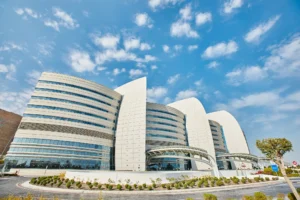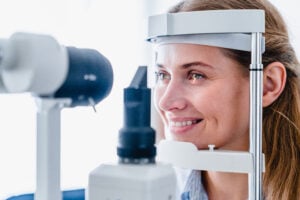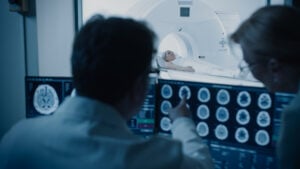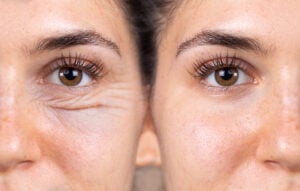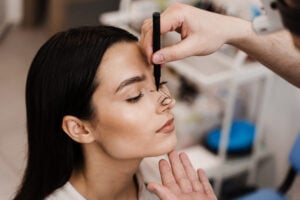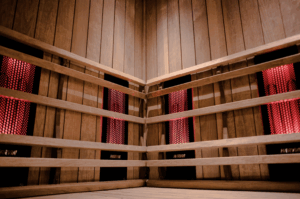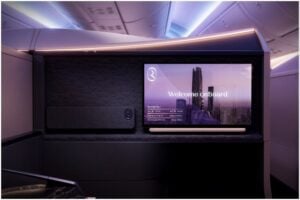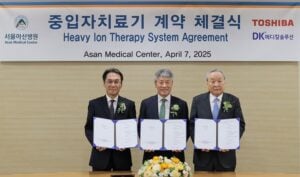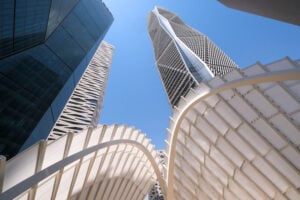Kyphosis is a condition which causes the top of the spine to curve outward in an exaggerated fashion. It makes an individual look as if they are slouching forward with a hunched back, and in severe cases, it can cause difficulties with balance. Medical professionals consider a hunch of more than 45 per cent to be problematic.
Additional symptoms of Kyphosis
Kyphosis is associated with various symptoms, including stiffness between the shoulder blades and in the back, and tight hamstrings or numbness in the legs, caused by compressed nerves. Shortness of breath can result when the curvature of the spine impacts the lungs and air passages. In some cases, Kyphosis can cause incontinence and even difficulty eating.
Causes of Kyphosis
There are three types of Kyphosis – postural, Scheuermann’s and congenital.
- Postural Kyphosis can be caused by repeatedly carrying heavy bags which stretch the muscles and ligaments in the back or by slouching and poor posture.
- Scheuermann’s Kyphosis is a result of vertebrae in the back developing abnormally.
- Congenital Kyphosis is when the spine doesn’t form correctly in the womb. Two or more vertebrae sometimes fuse together.
Other causes of Kyphosis include a spinal injury – traumatic Kyphosis – or the spine curving with age. The latter is known as osteoporosis-related Kyphosis, particularly affecting post-menopausal women.
Prevalence rates
In the USA, Kyphosis occurs in one in ten children, affecting around 5.6 million youngsters. The condition is usually diagnosed between the ages of 12 to 17, with the majority of cases categorised as Scheuermann’s Kyphosis featuring abnormal spinal development. This form of the condition affects fifty per cent more boys than girls.
How is Kyphosis diagnosed?
The doctor is likely to conduct a physical examination which will involve the patient stretching and performing upper body exercises. The patient may also be asked to lie flat to assess the spine’s flexibility. If the curve is difficult to flatten, an X-ray or MRI scan is carried out. In severe cases, a lung function or blood test may also be required.
What happens if left untreated
If childhood kyphosis is not treated, the curve in the back is likely to get worse, leading to further health problems as the child grows into an adult.
The chances of developing postural Kyphosis can be reduced by using ergonomic chairs and desks at work, exercising regularly to strengthen the back and core muscles, stopping smoking and reducing alcohol intake. Vitamin D and calcium supplements can also help with bone strength.
Can Kyphosis be reversed and corrected?
Spinal fusion surgery can be carried out in severe cases of Scheuermann’s Kyphosis and congenital Kyphosis. This consists of combining several vertebrae to form a single bone segment. Surgery for severe Kyphosis may involve inserting rods, metal screws, and even plates into the spine. The overall aims of spinal surgery are to relieve pain and correct the individual’s back curvature.
Ongoing treatment for postural Kyphosis and Scheuermann’s Kyphosis will include regular diagnostics imaging to ensure the curvature doesn’t get any worse. Physical therapy in the form of specific exercises – knee rolls, pelvic tilting and knees-to-chest arching – is often given to help strengthen the back and surrounding muscles. Regular activities such as running, swimming, walking and yoga are also encouraged to keep the back flexible and strong.
In some cases, a back brace is used, especially if the spine is continuing to grow, as in Scheuermann’s Kyphosis.
Finding the best spine specialists in London
Certain clinics in the capital are known for treating Kyphosis. The following are some of the more widely-recognised treatment centres with advanced capabilities and some of the best spinal surgeons in London:
- The London Clinic. The main hospital is located at 20 Devonshire Place, with consulting rooms in Harley Street. Specialists include Mr Erlick Pereira, Consultant Neurosurgeon and Spinal Surgeon, and Mr Ahmed Ibrahim, Consultant Neurosurgeon.
- Schoen Clinic. This Spinal and Orthopaedic Hospital is at 66 Wigmore Street. Back and Spine specialists include Mr Ahmed-Ramadan Sadek, Consultant Neurosurgeon & Spinal Surgeon, Mrs Anne Mitchener, Consultant Neurosurgeon and Professor David Holder, Consultant Neurophysiology.
- St John and St Elizabeth Hospital. This hospital is located at 60 Grove End Road, St John’s Wood. Surgical specialists include: Mr Bob Chatterjee, Specialist Consultant Spinal Surgeon, Mr Bahram Fakouri, Senior Consultant Spinal Neurosurgeon and Mr Sean Molloy, senior spinal orthopaedic surgeon.
- London Spine Care. The clinic is based at 30 Devonshire street, Marylebone. Specialists include Prof Arun Ranganathan, Consultant Adult and Paediatric Spinal Surgeon, Mr Masood Shafafy, Consultant Spinal Surgeon and Mr Jaykar R. Panchmatia, Consultant Spinal Surgeon
At Medical Travel Market, we connect patients with leading doctors and hospitals worldwide. Our network includes established hospitals from London to Turkey and South Korea. Contact us to find out more.

